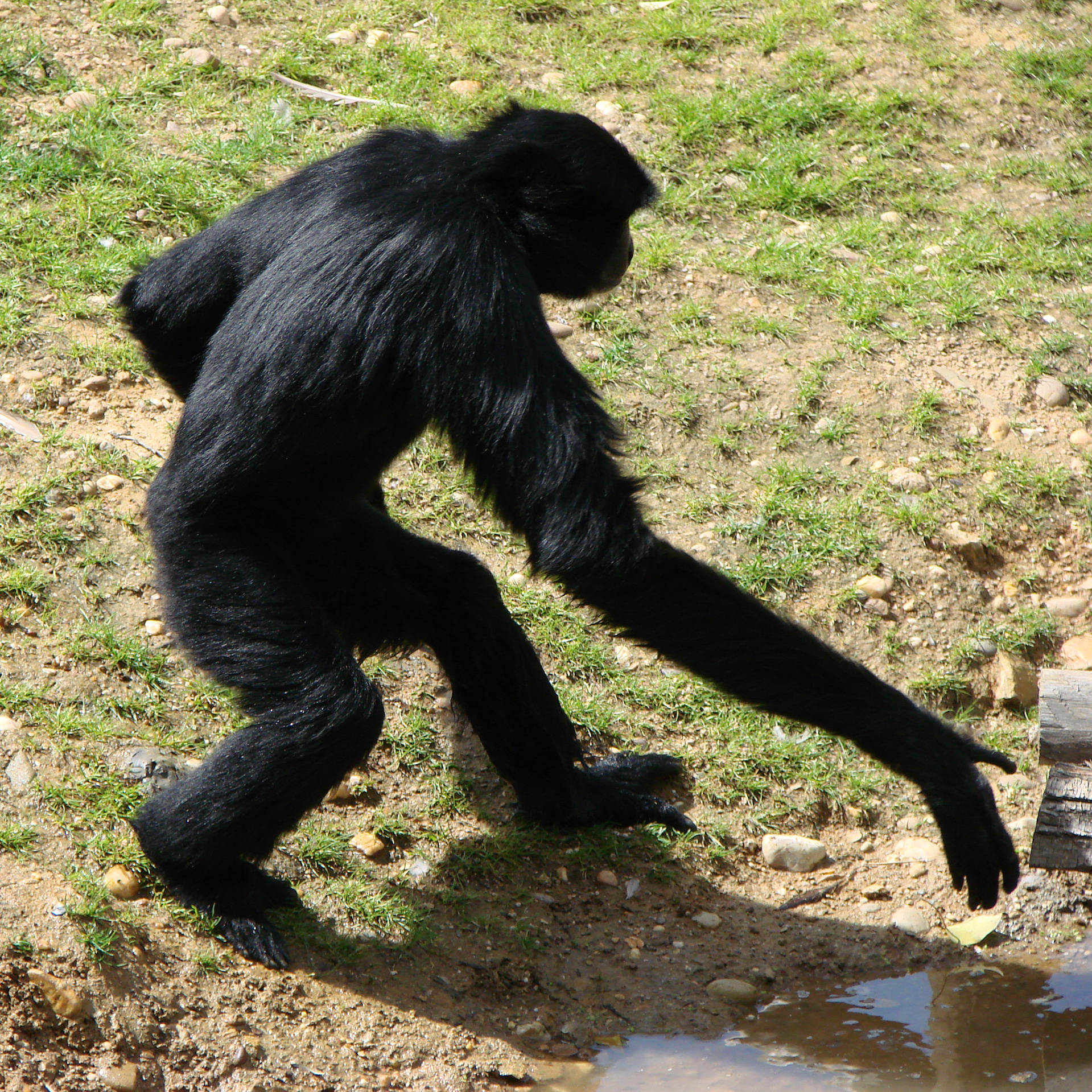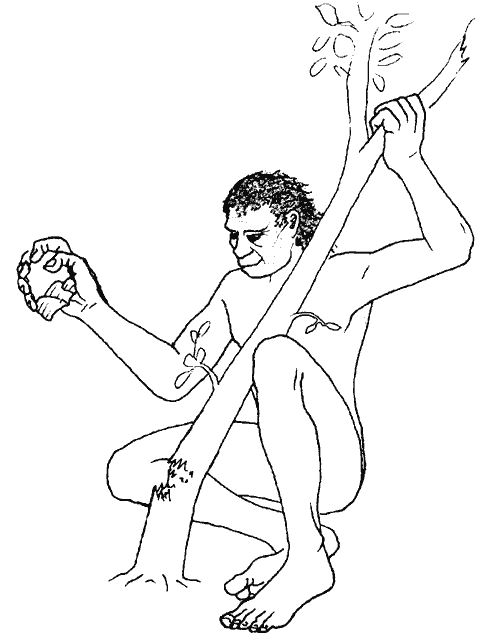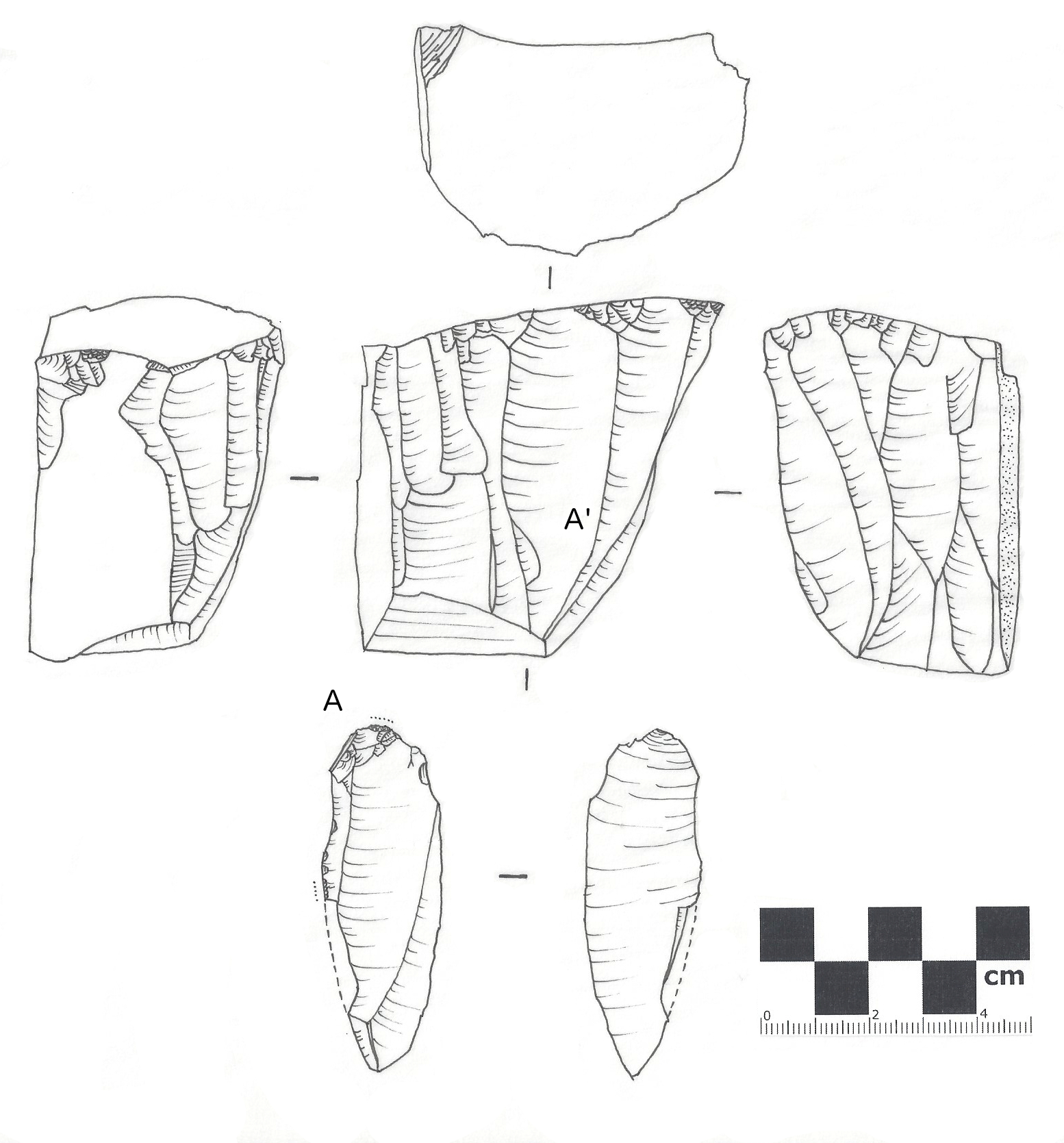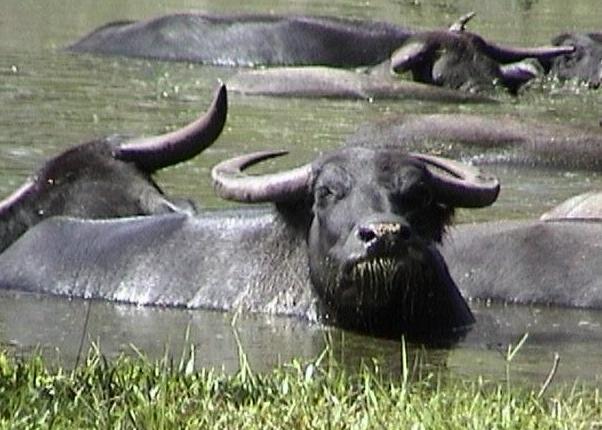|
Solo Man
Solo Man (''Homo erectus soloensis'') is a subspecies of '' H. erectus'' that lived along the Solo River in Java, Indonesia, about 117,000 to 108,000 years ago in the Late Pleistocene. This population is the last known record of the species. It is known from 14 skullcaps, two tibiae, and a piece of the pelvis excavated near the village of Ngandong, and possibly three skulls from Sambungmacan and a skull from Ngawi depending on classification. The Ngandong site was first excavated from 1931 to 1933 under the direction of Willem Frederik Florus Oppenoorth, Carel ter Haar, and Gustav Heinrich Ralph von Koenigswald, but further study was set back by the Great Depression, World War II and the Indonesian War of Independence. In accordance with historical race concepts, Indonesian ''H. erectus'' subspecies were originally classified as the direct ancestors of Aboriginal Australians, but Solo Man is now thought to have no living descendants because the remains far predate modern ... [...More Info...] [...Related Items...] OR: [Wikipedia] [Google] [Baidu] |
Late Pleistocene
The Late Pleistocene is an unofficial Age (geology), age in the international geologic timescale in chronostratigraphy, also known as the Upper Pleistocene from a Stratigraphy, stratigraphic perspective. It is intended to be the fourth division of the Pleistocene Epoch within the ongoing Quaternary Period. It is currently defined as the time between 129,000 and c. 11,700 years ago. The late Pleistocene equates to the proposed Tarantian Age of the geologic time scale, preceded by the officially ratified Chibanian (commonly known as the Middle Pleistocene). The beginning of the Late Pleistocene is the transition between the end of the Penultimate Glacial Period and the beginning of the Last Interglacial around 130,000 years ago (corresponding with the beginning of Marine Isotope Stage 5). The Late Pleistocene ends with the termination of the Younger Dryas, some 10th millennium BC, 11,700 years ago when the Holocene Epoch began. The term Upper Pleistocene is currently in use as a p ... [...More Info...] [...Related Items...] OR: [Wikipedia] [Google] [Baidu] |
Java Man
Java Man (''Homo erectus erectus'', formerly also ''Anthropopithecus erectus or'' ''Pithecanthropus erectus'') is an early human fossil discovered in 1891 and 1892 on the island of Java (Indonesia). Estimated to be between 700,000 and 1,490,000 years old, it was, at the time of its discovery, the oldest hominid fossil ever found, and it remains the type specimen for ''Homo erectus''. Led by Eugène Dubois, the excavation team uncovered a tooth, a skullcap, and a thighbone at Trinil on the banks of the Solo River in East Java. Arguing that the fossils represented the " missing link" between apes and humans, Dubois gave the species the scientific name '' Anthropopithecus erectus'', then later renamed it ''Pithecanthropus erectus''. The fossil aroused much controversy. Within a decade of the discovery almost eighty books or articles had been published on Dubois's finds. Despite Dubois's argument, few accepted that Java Man was a transitional form between apes and humans. Some ... [...More Info...] [...Related Items...] OR: [Wikipedia] [Google] [Baidu] |
Stingray
Stingrays are a group of sea Batoidea, rays, a type of cartilaginous fish. They are classified in the suborder Myliobatoidei of the order Myliobatiformes and consist of eight families: Hexatrygonidae (sixgill stingray), Plesiobatidae (deepwater stingray), Urolophidae (stingarees), Urotrygonidae (round rays), Dasyatidae (whiptail stingrays), Potamotrygonidae (river stingrays), Gymnuridae (butterfly rays) and Myliobatidae (eagle rays). There are about 220 known stingray species organized into 29 genera. Stingrays are common in coastal tropical and subtropical marine waters throughout the world. Some species, such as the thorntail stingray (''Dasyatis thetidis''), are found in warmer temperate oceans and others, such as the deepwater stingray (''Plesiobatis daviesi''), are found in the deep ocean. The Potamotrygonidae, river stingrays and a number of whiptail stingrays (such as the Niger stingray (''Fontitrygon garouaensis'')) are restricted to fresh water. Most myliobatoids are d ... [...More Info...] [...Related Items...] OR: [Wikipedia] [Google] [Baidu] |
Harpoon
A harpoon is a long, spear-like projectile used in fishing, whaling, sealing, and other hunting to shoot, kill, and capture large fish or marine mammals such as seals, sea cows, and whales. It impales the target and secures it with barb or toggling claws, allowing the fishermen or hunters to use an attached rope or chain to pull and retrieve the animal. A harpoon can also be used as a ranged weapon against other watercraft in naval warfare. Certain harpoons are made with different builds to perform better with the type of target. For example, the Inuit have short, fixed-foreshaft harpoons for hunting at breathing holes, while loose-shafted ones are made for throwing and remaining attached to the game. History In the 1990s, harpoon points, known as the Semliki harpoons or the Katanda harpoons, were found in the Katanda region in Zaire. As the earliest known harpoons, these weapons were made and used 90,000 years ago, most likely to spear catfishes. Later, in Japan, sp ... [...More Info...] [...Related Items...] OR: [Wikipedia] [Google] [Baidu] |
Spear
A spear is a polearm consisting of a shaft, usually of wood, with a pointed head. The head may be simply the sharpened end of the shaft itself, as is the case with Fire hardening, fire hardened spears, or it may be made of a more durable material fastened to the shaft, such as bone, flint, obsidian, copper, bronze, iron, or steel. The most common design for hunting and/or warfare, since modern times has incorporated a metal spearhead shaped like a triangle, lozenge (shape), diamond, or Glossary of leaf morphology, leaf. The heads of fishing spears usually feature multiple sharp Tine (structural), points, with or without barbs. Spears can be divided into two broad categories: those designed for thrusting as a melee weapon (including weapons such as lances and Pike (weapon), pikes) and those designed for throwing as a ranged weapon (usually referred to as javelins). The spear has been used throughout human history as a weapon for hunting and/or fishing and for warfare. Along with ... [...More Info...] [...Related Items...] OR: [Wikipedia] [Google] [Baidu] |
Stone Tool
Stone tools have been used throughout human history but are most closely associated with prehistoric cultures and in particular those of the Stone Age. Stone tools may be made of either ground stone or knapped stone, the latter fashioned by a craftsman called a flintknapper. Stone has been used to make a wide variety of tools throughout history, including arrowheads, spearheads, hand axes, and querns. Knapped stone tools are nearly ubiquitous in pre-metal-using societies because they are easily manufactured, the tool stone raw material is usually plentiful, and they are easy to transport and sharpen. The study of stone tools is a cornerstone of prehistoric archaeology because they are essentially indestructible and therefore a ubiquitous component of the archaeological record. Ethnoarchaeology is used to further the understanding and cultural implications of stone tool use and manufacture. Knapped stone tools are made from cryptocrystalline materials such as chert, f ... [...More Info...] [...Related Items...] OR: [Wikipedia] [Google] [Baidu] |
Chopper (archaeology)
Archaeologists define a chopper as a pebble tool with an irregular cutting edge formed through the removal of lithic flake, flakes from one side of a stone. Choppers are crude forms of stone tool and are found in archaeological industry, industries as early as the Lower Palaeolithic from around 2.5 million years ago. These earliest known specimens were found in the Olduvai Gorge in Tanzania by Louis Leakey in the 1930s. The name Oldowan was given to the tools after the site in which they were excavated. These types of tools were used an estimated time range of 2.5 to 1.2 million years ago. Formation To create this tool, one would have to use a hammerstone to chip away flakes on the stone to create a side of the stone with a very sharp edge, allowing for the cutting and hacking of an object. This is a unique type of lithic reduction, as only a single side of the stone is retouched to produce the cutting surface of the stone. The side that does not do the cutting is left unscathed ... [...More Info...] [...Related Items...] OR: [Wikipedia] [Google] [Baidu] |
Lithic Flake
In archaeology, a lithic flake is a "portion of rock (geology), rock removed from an objective piece by percussion or pressure,"Andrefsky, W. (2005) ''Lithics: Macroscopic Approaches to Analysis''. 2d Ed. Cambridge, Cambridge University Press and may also be referred to as simply a ''flake'', or collectively as debitage. The objective piece, or the rock being reduced by the removal of flakes, is known as a lithic core, core.Andrefsky, W. (2005) ''Lithics: Macroscopic Approaches to Analysis''. 2d Ed. Cambridge, Cambridge University Press Once the proper tool stone has been selected, a percussor or pressure flaker (e.g., an antler Tine (structural), tine) is used to direct a sharp blow, or apply sufficient force, respectively, to the surface of the stone, often on the edge of the piece. The energy of this blow propagates through the material, often (termination type, but not always) producing a Hertzian cone of force which causes the rock to fracture in a controllable fashion. Since c ... [...More Info...] [...Related Items...] OR: [Wikipedia] [Google] [Baidu] |
Hexaprotodon
''Hexaprotodon'' is an extinct genus of hippopotamid known from Asia and possibly Africa and Europe. The name ''Hexaprotodon'' means "six front teeth" as some of the fossil forms have three pairs of incisors.''Hexaprotodon'' The Paleobiology Database, läst 19 mars 2013. The was historically placed in the genus, but today is generally placed in its own genus. The core Asian members of the genus ranged from the Indian subcontinent to Southeast Asia, and are thought to have had an aquatic ecology similar to that of the living common hippopotamus. The last members of ... [...More Info...] [...Related Items...] OR: [Wikipedia] [Google] [Baidu] |
Malayan Tapir
The Malayan tapir (''Tapirus indicus''), also called Asian tapir, Asiatic tapir, oriental tapir, Indian tapir, piebald tapir, or black-and-white tapir, is the only living tapir species outside of the Americas. It is native to Southeast Asia from the Malay Peninsula to Sumatra. It has been listed as Endangered species, Endangered on the IUCN Red List since 2008, as the population is estimated to comprise fewer than 2,500 mature individuals. Taxonomy The scientific name ''Tapirus indicus'' was proposed by Anselme Gaëtan Desmarest in 1819 who referred to a tapir described by Pierre-Médard Diard. ''Tapirus indicus brevetianus'' was coined by a Dutch zoologist in 1926 who described a black Malayan tapir from Sumatra that had been sent to Rotterdam Zoo in the early 1920s. Phylogenetics, Phylogenetic analyses of 13 Malayan tapirs showed that the species is monophyletic. It was placed in the genus ''Acrocodia'' by Colin Groves and Peter Grubb (zoologist), Peter Grubb in 2011. However, ... [...More Info...] [...Related Items...] OR: [Wikipedia] [Google] [Baidu] |
Water Buffalo
The water buffalo (''Bubalus bubalis''), also called domestic water buffalo, Asian water buffalo and Asiatic water buffalo, is a large bovid originating in the Indian subcontinent and Southeast Asia. Today, it is also kept in Italy, the Balkans, Australia, North America, South America and some African countries. Two extant Type (biology), types of water buffalo are recognized, based on Morphology (biology), morphological and Ethology, behavioural criteria: the river buffalo of the Indian subcontinent and further west to the Balkans, Egypt and Italy; and the swamp buffalo from Assam in the west through Southeast Asia to the Yangtze Valley of China in the east. The wild water buffalo (''Bubalus arnee'') is most probably the ancestor of the domestic water buffalo. Results of a phylogenetic study indicate that the river-type water buffalo probably originated in western India and was domesticated about 6,300 years ago, whereas the swamp-type originated independently from Mainland Sou ... [...More Info...] [...Related Items...] OR: [Wikipedia] [Google] [Baidu] |
Bos Palaesondaicus
''Bos palaesondaicus'' occurred on Pleistocene Java (Indonesia) and belongs to the Bovinae subfamily. It has been described by the Dutch paleoanthropologist Eugène Dubois in 1908.Dubois, E. (1908). Das Geologische Alter der Kendengoder TrinilFauna. Tijdschr. Kon. Ned. Aardr. Gen., ser. 2, vol. 25, pp. 12351270, pl. 39. The holotype of ''Bos palaesondaicus'' is a skull from Trinil. This species is the likely ancestor to the banteng The banteng (''Bos javanicus''; ), also known as tembadau, is a species of wild Bovinae, bovine found in Southeast Asia. The head-and-body length is between . Wild banteng are typically larger and heavier than their Bali cattle, domesticated ... (''Bos javanicus'').Hooijer, D.A. (1958a). Fossil Bovidae from the Malay archipelago and the Punjab, Zoologische Verhandelingen van de Museum Leiden 38:1–112.Hooijer, D. A. (1958b). Sexual differences in the skull of fossil and recent banteng. Mammalia 22:73–75. References Bos Extinct ani ... [...More Info...] [...Related Items...] OR: [Wikipedia] [Google] [Baidu] |











